Trees Birds Mammals Fish Amphibians Reptiles
Wild Algarve
Bookshop
Crepidotus mollis (Schaeff.) Staude - Peeling Oysterling
Phylum: Basidiomycota - Class: Agaricomycetes - Order: Agaricales - Family: Inocybaceae
Distribution - Taxonomic History - Etymology - Culinary Notes - Identification - Reference Sources
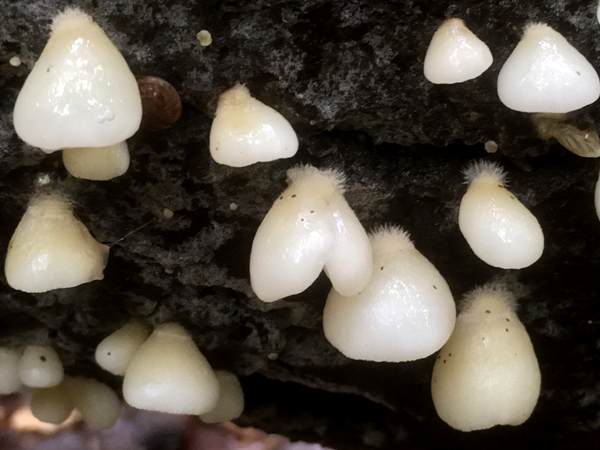
Crepidotus mollis, the Peeling Oysterling is also referred to in some field guides as the Soft
Slipper Mushroom; it is a rubbery, fan-shaped fungus that grows on the trunks, large branches
and stumps of dead broad-leaf trees.
Look out for the Peeling Oysterling in well shaded damp woodlands, and particularly where the air is kept moist by tumbling streams with tree-lined waterfalls.
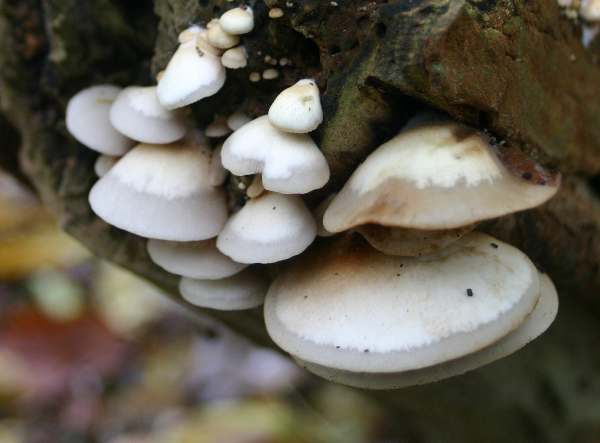
As you might infer from its common name, this fan-shaped mushroom has a cap cuticle (skin) that readily peels away from the flesh. The skin, or pileas, is rubbery and transparent and can be stretched to at least double its length before it tears. (This is as useful diagnostic feature that separates Crepidotus mollis from other oyster-shaped mushrooms.
Distribution
Common and widespread in damp woodlands throughout Britain and Ireland, this mushroom occurs across mainland Europe and is also recorded in many other parts of the world including North America.
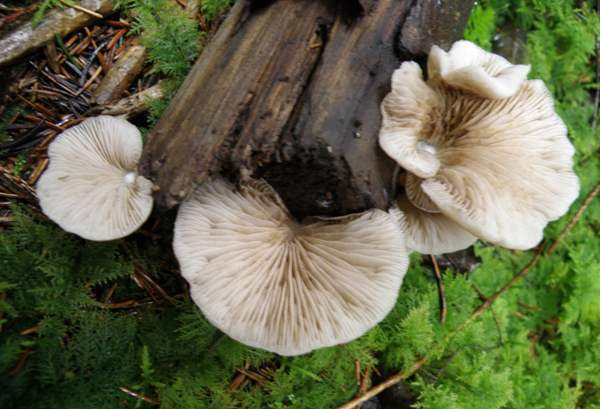
Taxonomic history
The Peeling Oysterling acquired its basionym in 1762, when Jacob Christian Schaeffer described this woodland fungus and gave it the binomial name Agaricus mollis. (In the early days of fungal taxonomy most gilled species were initially placed in a huge Agaricus genus, since largely redistributed to other newer genera.) It was German mycologist Friedrich Staude (died 1861) who, in 1857, transferred this species to its present genus, creating its currently accepted scientific name Crepidotus mollis.
Crepidotus mollis is the type species of the genus Crepidotus, which was established by Friedrick Staude in 1857.
Synonyms of Crepidotus mollis include Agaricus mollis Schaeff., Crepidopus mollis (Schaeff.) Gray, Crepidotus ralfsii (Berk. & Broome) Sacc., and Agaricus ralfsii Berk. & Broome.
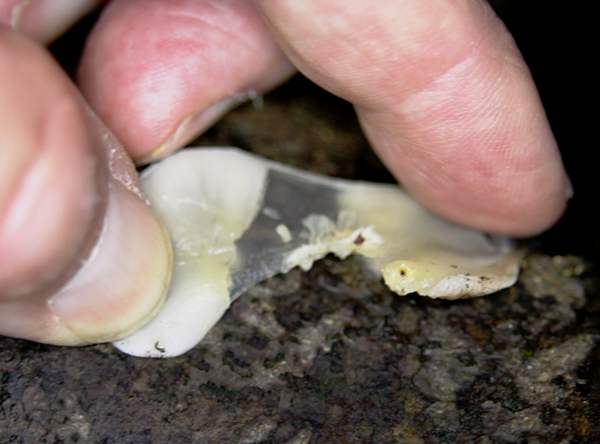
Etymology
The generic name Crepidotus comes from crepid- meaning a base or a shoe or a slipper (some sources say it means 'cracked'), and otus, meaning an ear - hence it suggests a 'slipper-like ear'. In the past mushrooms in this genus were sometimes referred to as slipper mushrooms.
This species was once more commonly known as the Soft Slipper Mushroom, and indeed the direct English translation of its specific epithet mollis (itself a Latin word) is soft.
Above: a demonstration of the transparency of the cuticle of Crepidotus mollis when a cap is stretched. This characteristic helps to differentiate the Peeling Oysterling from other kidney-shaped fungi. The skin can be peeled cleanly from the cap, and this feature is the origin of the common mame Peeling Oysterling. (Oysterling is, of course, a reference to its oyster-like shape.)
Identification guide
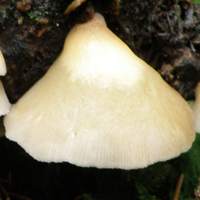 |
Cap
Initially very pale, the 1.5 to 5cm diameter kidney-shaped caps
turn ochre-brown with age. Faint striations are sometimes visible
towards the margin of the cap, which has a gelatinous layer in the upper part of the flesh; this layer is elastic, and when stretched a see-through window can be created.
The cap flesh is white, very watery and easily broken. |
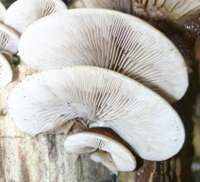 |
Gills
The pale brown gills fan out from the
attachment point; they are soft and gelatinous.
As the fruitbody ages, the spores mature and the gills turn rusty
brown from the centre.
Stem
Usually there is no visible stem; the
attachment to the substrate is at one edge of the cap, and from that point
the gills radiate. |
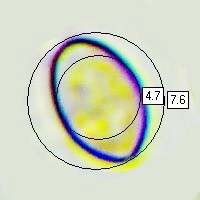 |
Spores
Broadly ellipsoidal, smooth, 7-9 x 5-7µm.
Spore print
Snuff brown. |
Odour/taste |
Not distinctive. |
Habitat & Ecological role |
Saprobic, on stumps, dead trunks and fallen branches
of deciduous trees. |
Season |
Late summer and autumn. |
Similar species |
Crepidotus variabilis is much smaller and paler, with buff gills. |
Culinary Notes
This fairly common summer and autumn species is of dubious edibility and may even be poisonous. Care is needed, therefore, when collecting edible Oyster Mushrooms, Pleurotus ostreatus, to avoid accidentally gathering Peeling Oysterlings instead. (Like so many other fungi, the Peeling Oysterling seems to be particularly partial to oaks and to Beech trees.) The brown spore print of a Peeling Oysterling readily distinguishes it from edible Oyster Mushrooms, whose spore prints are white; however, in the field the elastic cap cuticle is a much faster was of separating the inedible Crepidotus mollis from edible Pleurotus species.
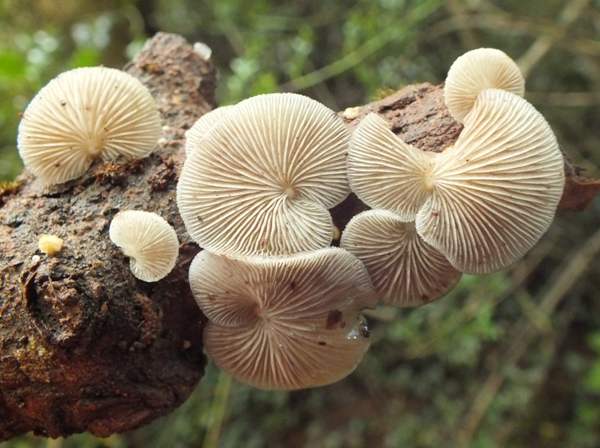
Reference Sources
Pat O'Reilly; Fascinated by Fungi, 2016.
Dictionary of the Fungi; Paul M. Kirk, Paul F. Cannon, David W. Minter and J. A. Stalpers; CABI, 2008
Taxonomic history and synonym information on these pages is drawn from many sources but in particular from the British Mycological Society's GB Checklist of Fungi.
Acknowledgements
This page includes pictures kindly contributed by Simon Harding.
Top of page...
Fascinated by Fungi. Back by popular demand, Pat O'Reilly's best-selling 450-page hardback book is available now. The latest second edition was republished with a sparkling new cover design in September 2022 by Coch-y-Bonddu Books. Full details and copies are available from the publisher's online bookshop...